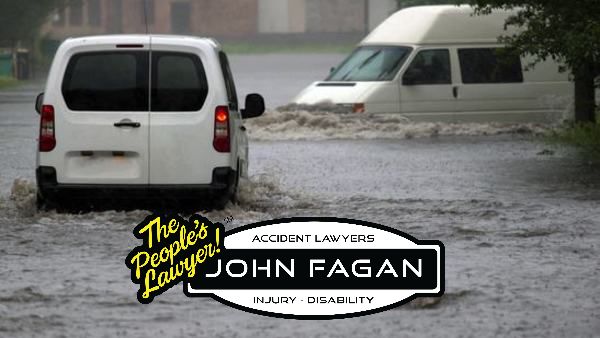Attorney General Landry offers the following tips on how to recognize a flood-damaged vehicle. (Photo: Shutterstock)
Early August saw major flooding in New Orleans, and other parts of the country, such as Missouri and Arkansas, are also dealing with flooding from heavy rains and swollen rivers. As drivers navigated flooded streets, many motor vehicles were underwater, along with yards, homes and businesses.
Related: Protections for La. policyholders impacted by Aug. 2016 flooding extended
Louisiana Insurance Commissioner Jim Donelon and Attorney General Jeff Landry have provided guidance to victims of the flooding event, urging them to be proactive vehicle consumers. Although targeted to Louisiana citizens, their advice is applicable to anyone whose car was flooded or damaged by water in any location. It’s especially important for used car buyers in areas subject to flooding to take note as well.
“In the aftermath of a natural disaster, it is important for consumers to be aware of the warning signs of a flood damaged vehicle,” said Landry. “If you are in the market to buy a used vehicle — be sure to inspect it carefully, looking at hidden parts or crevices to check for flood residue, which are indicators of the vehicle having water damage. My office will not stand for fraud, especially following this flooding event that has negatively affected so many in New Orleans.”
“Even as we are preparing for the peak of hurricane season, the flooding in New Orleans this weekend is a sobering reminder that bad weather can happen at any time,” said Donelon. “If anyone affected by the flooding has questions or concerns about their insurance policies or how to file a claim, I urge them to contact the Department. We have staff standing by to answer questions as our citizens start the process of cleaning up and taking stock of damage.”
Related: The current state of flood insurance
Recognizing a flood-damaged vehicle
Attorney General Landry offers the following tips on how to recognize a flood-damaged vehicle:
Be conscious of the smell inside the vehicle. A heavy aroma of cleaners and disinfectants could be a sign that someone’s trying to mask a mold or odor problem.
Pull up the carpet in the trunk of the vehicle and inspect under the seats. Also look for fogging or moisture in the interior lights, exterior lights and dashboard.
Be on the lookout for dirt and rust in hard to reach spots, such as the glove compartment, dashboard, upper door hinges, trunk latches and screws on the console.
Have a mechanic you trust inspect the vehicle’s mechanical and electrical components, and systems that contain fluids for water contamination. Check the transmission fluid and oil. If fluids appear murky and grayish, that is a good indication the vehicle has been flooded.
Know the difference between “salvage title” and “flood title.” A salvage title means the vehicle was declared a total loss by an insurance company because of a serious accident or some other problems. A flood title means the vehicle has damage from sitting in water deep enough to fill the engine compartment. The title status is part of a vehicle history report.
Obtain a vehicle history report. The National Insurance Crime Bureau’s free database includes flood damage and other information.
Related: Beware of flood-damaged vehicles resold as in good condition, warns NICB
Filing a claim?
Insurance Commissioner Donelon offers the following tips on filing a claim:
Contact your insurance agent as soon as possible. Have your policy readily available and find out whether the damage is covered under the terms of your policy and how long you have to file a claim. If you have trouble with that process, contact your local Department of Insurance for assistance.
Your automobile insurance policies cover flooding if you have purchased comprehensive coverage. If you only have liability coverage, your vehicle is not covered for flooding.
Minimize your losses and document the damage. Take photos of any damage and then make whatever reasonable temporary repairs are needed.
Remember that flooding is generally not covered under standard homeowners and renters insurance policies. Flood insurance is a separate policy through FEMA’s National Flood Insurance Program and some private insurers.
Ask for identification from any agents, adjusters or contractors. Do not sign any contracts for repairs until you have been instructed to do so by your adjuster and you have called the Better Business Bureau in your area.
Don’t be afraid to file a claim. Storms are considered “Acts of God” or “Acts of Nature” and an insurance company cannot cancel, refuse to renew or increase the amount of a premium on a homeowners policy based solely on this type of incident.
If you suspect a dealer is knowingly selling a flood-damaged or salvaged vehicle as being in good-condition, please contact your local law enforcement agency and state Consumer Protection office. And if you were affected by flooding and believe your insurance policy is not being properly honored, you can file a complaint with your state’s insurance commissioner.






